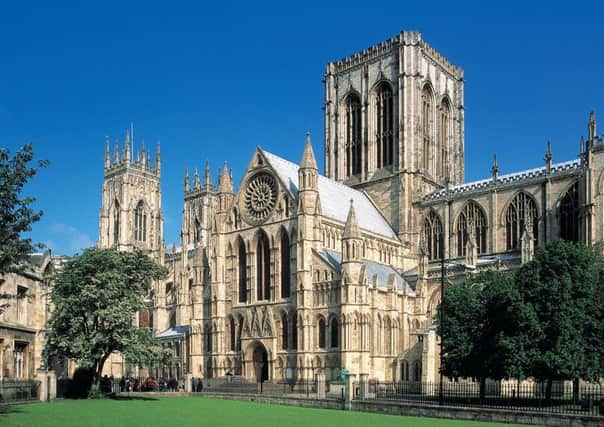Nostalgia: Why was December 25 chosen?


The possible answers arrive in different forms. It is well known that the first Christians decided to fix their calendar so that their major commemorations coincided with both the seasons of the natural year and older existing pagan festivals. So the ancestor or predecessor of Christmas was the Roman saturnalia, a seven-day celebration running from December 17 to the 24; and it was no coincidence that the birthday of Mithras, the Roman sun-god, was December 25. Today the flames of Mithras, Christ’s chief rival in the Roman empire, survive only in the blazing logs and puddings of the Christmas season.
Several customs of the festival of Saturn, the Roman god of plants and crops, were copied by early Christians who used all kinds of greenery, particularly the evergreen holly and ivy, in their decorations. Essentially, however, the pagan festival was celebrated as an orgy of excess and self-indulgence, in ways that are all too familiar to us 2,000 years later.
Advertisement
Hide AdAdvertisement
Hide AdOne other characteristic ceremony of saturnalia was role-reversal: slaves briefly became masters and masters waited on slaves; and for centuries since in some communities, such as surprisingly the British armed forces, the custom of commissioned officers serving other ranks at the Christmas dinner table was practised on Christmas day.
But the strongest reason for the choice of December 25 was that it coincided approximately with the immediate aftermath of the winter solstice in the northern hemisphere. After the sun has declined alarmingly further and further towards the horizon and daylight diminishes, there comes a day when it appears to recover from its loss of height and duration. Such a day in the annual cycle is indeed cause for universal celebration and relief.
Secondly, Christians adopted December 25 because it is about nine months after the spring equinox which they agreed marked the conception of Mary on March 25. So the Christian year came to reflect and record the conception and nativity of Jesus, their adopted Greek name for the Hebrew Joshua.
During the last 1,600 years since Christians first began to celebrate the nativity on December 25, many additions and modifications have been made by them to the original narrative told in the gospels of Matthew and Luke. The so-called yule log, holly and ivy were also adopted in imitation of old German pagan customs; and the so-called Christmas tree was another pagan symbol which owes its later popularity in Britain to Queen Victoria’s husband, Prince Albert, who first set one up at Windsor in 1841.
Advertisement
Hide AdAdvertisement
Hide AdHolly, “the first tree in the greenwood”, was always the most important Christmas plant. The traditional superstition was that it protected homes and stables from menaces such as fire, lightning and witches. Formed into wreaths it was wrapped around animals, displayed on thresholds and nailed to house doors. Christians were quick to endow holly with religious properties: the red berries represented Christ’s blood and its white blossom the white sheet that Mary enfolded her newly-born baby.
Mistletoe, however, remained almost exclusively pagan. York Minster is the only church where it has always been welcome, perhaps because of its earliest Viking associations. There it was regarded as a symbol of peace and guaranteed sanctuary for local miscreants. The tradition of kissing under the mistletoe is both pagan and uniquely English.
At least one devout Christian enhanced the popular appeal of the Nativity scene. St Francis of Assisi (1182-1226) provided the birthplace with a crib for baby Jesus and both ox and ass to pay homage to him.
At all times and places, with some special exceptions, Christmas has been an occasion for feasting. Though the ingredients might have changed, for centuries Christians have been consuming mountains of pies, puddings and cakes. But especially in pre-Reformation England, after a twelve-day fast during Advent, meat was regarded as the most desirable Christmas fare.
Advertisement
Hide AdAdvertisement
Hide AdHenry VIII enjoyed his first Mexican turkey at Christmas 1542, though for most of his subjects goose was the favourite, plentiful Christmas treat. At Scarborough, the 44 members of the Common Hall on Sandside traditionally gorged themselves on the roasted town bull and more rarely on deer. When Sir Hugh Cholmley, the town’s military governor, was their chief guest at Christmas 1642, the total cost, including the vintner’s bill, for a venison feast came to £3 2s 4d.
Like much else, the Protestant Reformation changed Christmas. For a start, Protestants preferred Christ-tide. Before Elizabeth’s time, all churches were heavily decorated with greenery, illuminated with hundreds of candles, and some, like St Oswald’s at Filey, had “boy bishops” and in-house theatricals, though no evidence has been found of carols being sung inside Catholic churches before the Reformation.
Orthodox Anglicans at first preferred to celebrate Christmas the old Catholic ways, but not the Puritans and certainly not the Quakers. For example, Lady Margaret Hoby, a profoundly religious woman, regarded Christmas day just like any other, except when it fell on Sunday, “the Lordes Day”. Four hundred years ago, Christmas day did not merit even a mention in her diary.
There is still a common calumny abroad that Oliver Cromwell “abolished Christmas”. In fact, ever since the 1550s, Protestant radicals, such as William Strickland, four times MP for Scarborough, had openly condemned the “blasphemous” ways that the Nativity of Christ was celebrated. Later, from 1642 onwards, a succession of Parliamentary ordinances penalised what were called irreligious excesses of gluttony, drunkenness and debauchery on and about Christmas time. Cromwell approved of these injunctions but did not originate them. Only after the restoration of Charles II in 1660 did Parliament once again “give liberty to carnal and sensual delights”; and Quakers in particular were fined, pilloried and even imprisoned for opening their shops and practising their trades on Christmas day. (continued next week)